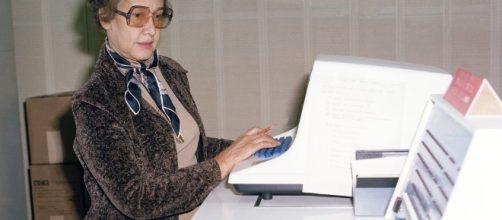“Hidden Figures,” the movie about how three African American women helped shape the early space program while battling against the culture of discrimination that adhered at the beginning of 1960s America, has become the number one movie in America, edging out the previous front runner, “Rogue One.” The movie has had a lot of crossover appeal, attracting both white and black audiences with its inspirational story. The inevitable question arises, could there be a sequel?
The story of the three women featured in “Hidden Figures” did not end with the first American orbital flight by John Glenn.
Katherine Johnson especially played a key role in the Apollo program, particularly the first moon landing of Apollo 11 and the subsequent near disastrous flight of Apollo 13. Johnson’s contributions were not depicted in the smash hit movie “Apollo 13” and in the HBO miniseries “From the Earth to the Moon.” One might think that it is past time to rectify that appalling oversight. Maybe Ron Howard, who directed the movie and produced the miniseries, could play a role in making that happen.
A movie depicting Katherine Johnson’s role in the Apollo program would have a kind of ironic twist, since around the same time the civil rights movement had turned on the moon landing effort. The Reverend Ralph Abernathy led a protest march on the occasion of the launch of Apollo 11, claiming that the moon landing was being conducted at the expense of the black community.
The African American musician and poet Gil Scott Heron composed an angry protest song, “Whitey on the Moon,” along the same themes. Yet the early space program was providing opportunities for African Americans that hitherto were unheard of and would expand such in later years.
Alternatively, a miniseries version of “Hidden Figures,” which started during World War II, might be something worthwhile to pursue. Large screen sequel or miniseries companion piece, the story is something that begs to be expanded upon, revealing a hitherto untold history of ordinary people who, though marginalized by the society in which they grew up, still were a crucial part of the greatest peacetime feat in world history.

